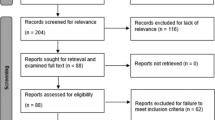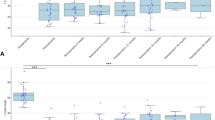Abstract
Purpose
In idiopathic scoliosis (IS), there is general agreement ending PSFs at L3 or more cranial is preferred to optimize spinal motion, and extending PSFs to L4 may be necessary; however, this may also cause coronal imbalance or caudal disc wedging post-operatively due to leveling of L4 tilt. The purpose of this study was to identify a pre-operative radiographic measurement, which can be used to quantify the optimal amount of L4 tilt for ideal post-operative radiographic alignment.
Methods
The study was a retrospective analysis of IS patients who underwent PSF to L4, with minimum 2-year follow-up post-operatively. Optimal outcome was defined by coronal balance, and L4–5 and L5–S1 disc wedging.
Results
44 patients (84% females, mean age 13.6 years) were included. Analysis of pre-operative flexibility radiographs determined only the L5 tilt on the right side-bending (RSB) radiograph correlated with optimal outcome 2 (p = 0.03). To confirm the validity, the RSB value was subtracted from the post-operative C7–L4 tilt and the odds ratio analysis which was significantly correlated with optimal outcome 1 at final follow-up (OR 1.04, 95% CI 1–1.09).
Conclusions
In PSF to L4 for IS, L5 tilt measured from the pre-operative supine RSB radiograph can be used to optimize radiographic outcomes. Matching the pre-operative L5 tilt on RSB radiograph by leaving L4 tilted at the end of the PSF construct during surgery, quantified by the C7–L4 acute angle tilt, appears to be a useful method to achieve the desired post-operative alignment.



Similar content being viewed by others
Data availability
The datasets generated during and/or analysed during the current study are available from the corresponding author on reasonable request.
References
Erickson MA, Baulesh DM (2011) Lowest instrumented vertebra selection in AIS. J Pediatr Orthop 31:S69–S76
Harrington PR (1972) Technical details in relation to the successful use of instrumentation in scoliosis. Orthop Clin N Am 3(1):49–67
Harrington PR (1962) Treatment of scoliosis. Correction and internal fixation by spine instrumentation. J Bone Jt Surg Am 44-a:591–610
Lee CS, Ha JK, Hwang CJ et al (2016) Is it enough to stop distal fusion at L3 in adolescent idiopathic scoliosis with major thoracolumbar/lumbar curves? Eur Spine J 25(10):3256–3264
Lee CS, Park K-B, Hwang CJ et al (2022) Prediction of long-term postoperative results of disc wedge and vertebral tilt with intraoperative prone radiograph in posterior correction of thoracolumbar/lumbar curve in adolescent idiopathic scoliosis: a minimum 5-year follow-up. Spine J 22(3):463–471
Lehman RA, Lenke LG, Helgeson MD, Eckel TT, Keeler KA (2010) Do intraoperative radiographs in scoliosis surgery reflect radiographic result? Clin Orthop Relat Res 468(3):679–686
Li J, Hwang SW, Shi Z et al (2011) Analysis of radiographic parameters relevant to the lowest instrumented vertebrae and postoperative coronal balance in Lenke 5C patients. Spine 36(20):1673–1678
O’Brien MF, Kulklo TR, Blanke KM, Lenke LG (2008) Radiographic measurement manual. Spinal Deformity Study Group (SDSG). Medtronic Sofamor Danek USA Inc., Memphis
Segal DN, Grabel ZJ, Konopka JA et al (2020) Fusions ending at the thoracolumbar junction in adolescent idiopathic scoliosis: comparison of lower instrumented vertebrae. Spine Deform 8(2):205–211
Shea KG, Stevens PM, Nelson M, Smith JT, Masters KS, Yandow S (1998) A comparison of manual versus computer-assisted radiographic measurement intraobserver. Measurement variability for cobb angles. Spine 23(5):551–555
Shu S, Bao H, Zhang Y et al (2020) Selection of distal fusion level for Lenke 5 curve: does the rotation of the presumed lower instrumented vertebra matter? Spine 45(12):E688–E693
Skaggs DL, Seehausen DA, Yamaguchi KT Jr et al (2016) Assessment of lowest instrumented vertebra tilt on radiographic measurements in Lenke “C” modifier curves undergoing selective thoracic fusion in adolescent idiopathic scoliosis. Spine Deform 4(2):125–130
Trobisch PD, Ducoffe AR, Lonner BS, Errico TJ (2013) Choosing fusion levels in adolescent idiopathic scoliosis. J Am Acad Orthop Surg 21(9):519–528
Wang Y, Bünger CE, Zhang Y et al (2013) Lowest instrumented vertebra selection for Lenke 5C scoliosis: a minimum 2-year radiographical follow-up. Spine 38(14):E894–E900
Zhuang Q, Zhang J, Wang S, Yang Y, Lin G (2021) How to select the lowest instrumented vertebra in Lenke type 5 adolescent idiopathic scoliosis patients? Spine J 21(1):141–149
Funding
No funding was received for this work.
Author information
Authors and Affiliations
Contributions
NE, AA, SJL: Substantial contributions to the conception or design of the work; or the acquisition, analysis, or interpretation of data for the work. NE, AA, SJL: Drafting the work or revising it critically for important intellectual content. NE, AA, SJL: Final approval of the version to be published. NE, AA, SJL: Agreement to be accountable for all aspects of the work in ensuring that questions related to the accuracy or integrity of any part of the work are appropriately investigated and resolved.
Corresponding author
Ethics declarations
Conflict of interest
No conflicts exist for any of the authors pertaining to the submitted work.
Ethical approval
No human subjects or animals participated and, therefore, no informed consent was obtained. IRB approval was obtained from Washington University Institutional Review Board, IRB # 201903011.
Additional information
Publisher's Note
Springer Nature remains neutral with regard to jurisdictional claims in published maps and institutional affiliations.
Rights and permissions
Springer Nature or its licensor (e.g. a society or other partner) holds exclusive rights to this article under a publishing agreement with the author(s) or other rightsholder(s); author self-archiving of the accepted manuscript version of this article is solely governed by the terms of such publishing agreement and applicable law.
About this article
Cite this article
Enata, N., Anderson, A. & Luhmann, S.J. Posterior spinal fusion with lowest instrumented vertebra at L4 in idiopathic scoliosis: optimizing radiographic outcomes using pre-operative flexibility radiographs. Spine Deform 11, 1435–1441 (2023). https://doi.org/10.1007/s43390-023-00740-8
Received:
Accepted:
Published:
Issue Date:
DOI: https://doi.org/10.1007/s43390-023-00740-8




